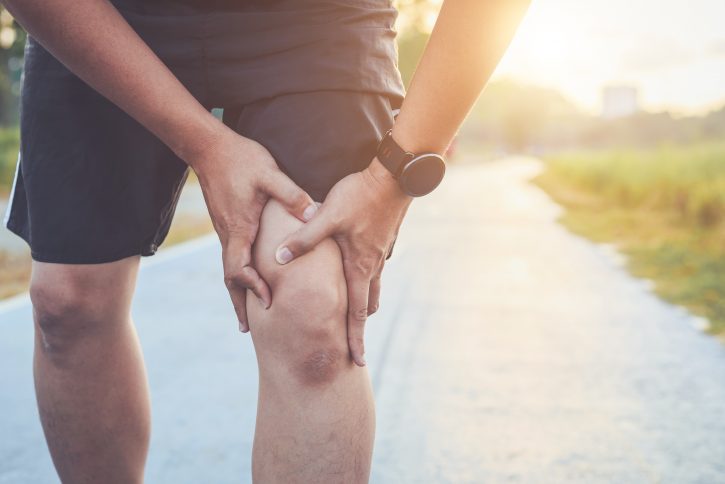
Do you feel pain at the front of your knee, around your kneecap when running, playing sports or climbing stairs? Have you heard the term “runner’s knee”?
Runner’s knee isn’t just for runners, and the term doesn’t describe just one type of injury. It’s a broad term that describes kneecap pain that can happen due to several problems. You might hear your doctor call it “patellofemoral pain syndrome.”
Runner’s knee causes pain at the front of the knee, around the kneecap. It can happen to people who run, jump or play sports, but it can also happen to those who don’t play sports. Your kneecap can get out of line, causing it to move incorrectly in its groove on your thighbone. This causes the smooth layer that helps your bones glide easily together, your cartilage, to wear down over time, causing pain. You might feel a dull ache in your kneecap or popping or crackling sounds when you stand up or go upstairs.
Runner’s Knee Causes
- Overuse – bending your knees repeatedly or doing high-stress exercise, like lunges
- A direct hit to the knee – falling or bumping your knee can cause runner’s knee
- Your bones aren’t aligned correctly – if any bones from your hips to your ankles are not in the correct position, including the kneecap, it can put too much pressure on certain spots. This can eventually lead to your kneecap slipping out of place, causing pain.
- Problems with your feet that affect how you move – hypermobile feet, flat feet or feet that roll inward when you walk can all cause knee pain
- Weak or unbalanced thigh muscles – your quadriceps keep your kneecaps in place when you bend or stretch the joint. If your quads are weak or tight, your kneecap may not stay in the right spot.
- Chrondromalacia patella – this happens when the cartilage under your kneecap breaks down. When your kneecap doesn’t glide smoothly, it can cause pain in the front of your knee.
Runner’s Knee Symptoms
- Pain at the front of the knee, especially around or under the kneecap
- Tenderness along the inner edge of the kneecap
- Swelling that appears after exercise
- Stiffness or pain when walking up or down hills, or after sitting for a long time
- Clicking, popping or cracking sounds when you move your knee
To diagnose your knee pain, your doctor will look at your knee, ask about your symptoms and your health history. They might watch how it moves when you walk, squat or jump to check how well your knee moves and how strong it is. A physical exam may be all your doctor needs to tell if you have runner’s knee, but other times, they may need to order imaging tests like an x-ray or MRI.
Runner’s Knee Treatment
For most people, runner’s knee gets better on its own with time, rest and self-care. There are things you can do at home to relieve your pain and speed recovery, including:
- Resting your knee by refraining from running, squatting, lunging or sitting and standing for long periods of time
- Ice your knee to help ease pain and swelling. You can ice your knee for 20-30 minutes every three to four hours for two to three days, or until the pain goes away.
- Wrap your knee with an elastic bandage, patellar straps or sleeves to give it extra support.
- Elevate your leg with a pillow to raise it when you lie down.
- Take an over-the-counter anti-inflammatory medicine, like ibuprofen or naproxen. These can help with pain and swelling but can have side effects. Use as directed on the label, unless your doctor says otherwise.
- Do stretching and strengthening exercises. Your doctor can recommend a physical therapist to show you what to do.
Be sure to talk to your doctor about the symptoms you are experiencing. They will put you on the path to living your daily life pain-free.
Source: WebMD
The expert orthopedic providers at FHP Orthopedics and Physical Medicine & Rehabilitation are trained in the treatment of runner’s knee. To request an appointment today, contact the office at 740-689-4935. Click here to learn more about the team.